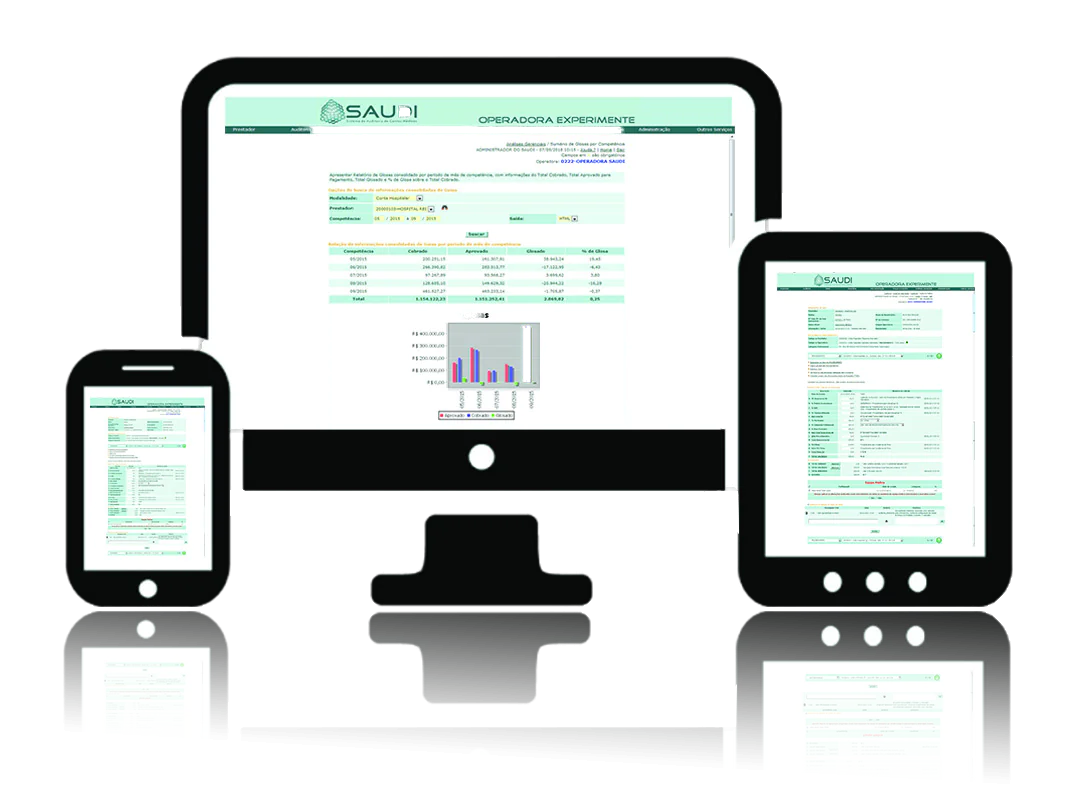The TUSS code or table is part of the health concept representation component of the TISS standard and establishes a single term for supplementary health procedures and care. Do you want to know how important it is and how it can become a great ally for your health plan provider? Follow this SAUDI article further.
TUSS table: what is it?
The TUSS table is based on the standardization of medical procedure names and codes based on the CBHPM table.
It is also an acronym for unified supplementary health terms and is actually a branch of the TISS specification
Therefore, also known as TUSS codes, they are divided into 4 categories:
- Medical procedures;
- Daily rates and fees;
- Materials and medicines;
- Orthoses, prosthetics and special materials;
As part of the TISS pattern, the TUSS table uses nomenclature to identify events and care items.
According to ANS and RN 305, healthcare operators and their service providers must comply with applicable standards defined by regulatory bodies, such as ANVISA and the Ministry of Health.
How important is it?
Before Tuss's desk, nominal disagreements between hospitals, healthcare providers, and regulatory agencies were common because they all used the same procedural terminology.
This is an obstacle for the department, especially financial and health audits, as it is difficult to determine the procedures carried out, causing delays in processes, especially the increase that the hospital does not allow.
Furthermore, the implementation of the TISS standard and the TUSS table is very important to reduce inconsistency between healthcare institutions, shorten execution time and mainly reduce impermissible situations.
And its benefits…
1. Better communication between institutions
Once the terms are standardized and unified in a table, health institutions are able to communicate in the same language, avoiding execution errors.
Therefore, once the professional requests a guide using the TUSS table, the procedure will appear clearly to the healthcare provider, not generating doubts about the process and facilitating communication.
2. Cost Reduction
As it is a systematized model, with fields filled in, with specific codes and names, there is smoothness in the process, making it faster, with fewer errors, eliminating the need for review or correction rework.
This way, it is possible to optimize the professional's time, there is less bureaucracy, time wastage and consequently a reduction in operational costs.
3. Process Simplification
With the reduction of doubts and obstacles and the improvement in communication, agreements and operators can achieve much faster releases.
Thus, reducing bureaucracy in the process benefits healthcare professionals, regulatory bodies, health plans and especially the patient.
How the membership process works
To implement TUSS, it is necessary to approve Normative Resolution No. 305/2012 to review the legislation. It is also important to be consistent with updates and modifications made by ANS.
The process is complex, involving several manuals and instructions. On the ANS portal, you will find the implementation documents and can download the 5 components of the current update version, support files, and other requests.
Additionally, you can access files related to deployment and compliance, including updating the program volume in the TUSS table.
As mentioned previously, the TUSS table is a branch of the TISS standard, and the two depend on each other, after all, to fill in the TISS tab, the TUSS code is needed.
Then, use the TUSS element to fill in the guide, which contains the code for the information established in the reference form.
Today, there are companies and consultants specialized in implementing TISS models and even training in the use of TISS / TUSS.
The role of healthcare auditors in using the TISS and TUSS models
As we have seen, the implementation of this model aims to facilitate and regulate beneficiaries in obtaining procedural authorizations, reducing bureaucracy and delays.
It is in this case that the health auditor stands out, as the professional is responsible for the technical and legislative knowledge of the mandatory use of the model. Furthermore, the template directly affects account auditing, so it is the template that ensures the implementation works.
In this sense, the action of professionals becomes urgent and necessary, as this will guarantee satisfaction, application and correct use of the model, and will allow ANS to continually update the adjustments produced.
What you need to pay attention to
Although there is a wealth of information available for implementing terminology and models, there are still some important considerations that must be considered, which will have an impact on implementation.
The model does not establish values about processes
Although the TISS/TUSS model is associated with standardization in the use of important billing guidelines, it does not establish value and price on any procedure.
The main objective of this model is to establish correct communication between all parties, optimize the ambiguity of terms and documents and simplify bureaucracy.
Mandatory use
This form is mandatory for operators and healthcare service providers, and the penalties are specified in RN 305.
Warning and Fine
Among the sanctions foreseen, we mention: warnings, fines of up to 35,000 reais, administrative litigation, cancellation of operating license, sale of the operator's investment portfolio and temporary disability.
So pay attention to the details!
Electronic information
Management software can assist in the model implementation process, as it is specialized and provides resources to align the needs of the health agency with those of the agencies.
These companies ensure interoperability and integration of processes and avoid sanctions issues.
About SAUDI
SAUDI is a medical audit system developed to maintain the “financial health” of supplementary health plan operators.
Our software automates the medical service provider bill audit process, so that both parties (operators and service providers) can clearly understand the situation and significantly reduce unnecessary costs.
Throughout the process, from requesting authorization for a medical procedure from the provider network to authorizing payment, SAUDI's goal is to make health plan providers healthier and better by accurately managing their costs of care. .
The results are surprising in the first few months of use! Want to know more? Contact and get to know our customized solutions according to your business needs!









